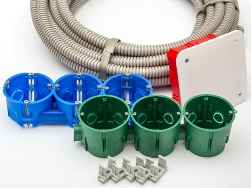 When repairing an apartment, special attention should be paid to competent wiring. If you miss this moment, a lot of inconvenience may appear, such as a lack of sockets or their placement behind furniture, too few lighting fixtures or an incorrect lighting scheme. It does not matter whether you do the repair of the wiring yourself or hired specialists - these tips will be useful to you in any case.
When repairing an apartment, special attention should be paid to competent wiring. If you miss this moment, a lot of inconvenience may appear, such as a lack of sockets or their placement behind furniture, too few lighting fixtures or an incorrect lighting scheme. It does not matter whether you do the repair of the wiring yourself or hired specialists - these tips will be useful to you in any case.
The first step is to evaluate: how many electrical appliances will be powered in the room. Then you can find out the exact number of outlets. This should be done when you have already made a plan for future repairs and know the approximate location and dimensions of the furniture. Next, you need to decide where the working area will be, and where the recreation area is - it is also necessary for the distribution of outlets and not only. In this matter, an important role is played by lighting. For any room with a universal and convenient solution ...
LED strip malfunctions and repair methods
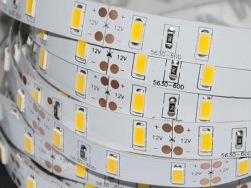 LED strips are widely used in decorative lighting and functional lighting, but from time to time they fail completely or partially, in connection with which there is a need for their repair or replacement. Often, you can do just replacing a small part of it, which will reduce repair costs. In this article, we will cover typical problems with LED tape.
LED strips are widely used in decorative lighting and functional lighting, but from time to time they fail completely or partially, in connection with which there is a need for their repair or replacement. Often, you can do just replacing a small part of it, which will reduce repair costs. In this article, we will cover typical problems with LED tape.
Before starting the discussion, I note that the main emphasis will be placed on common tapes with 12V power, 24V tapes are similar in design, and in the end we will consider the features of repairing network (220V) tapes. First, let's figure out what the LED strip consists of and why it is flexible. LED tape can be divided into two parts: a flexible printed circuit board and LEDs and current-limiting resistors. On one side, the flexible circuit board is coated with adhesive. A metallized layer is applied on the second side ...
Why is the neutral wire heated
 Heating the neutral wire can cause it to burn out and cause a power accident. Most often this happens when the loads are distributed unevenly in phases in a three-phase power supply network and due to poor contact. In this article we will explain why the neutral wire is heated and what to do in this situation. In order for the reasons for heating zero, you need to understand how a three-phase network works.
Heating the neutral wire can cause it to burn out and cause a power accident. Most often this happens when the loads are distributed unevenly in phases in a three-phase power supply network and due to poor contact. In this article we will explain why the neutral wire is heated and what to do in this situation. In order for the reasons for heating zero, you need to understand how a three-phase network works.
The load in the three-phase network can be connected by a star and a triangle, and the windings of the supply transformer can also be connected. The winding has two conclusions - the end and the beginning. If the ends of the windings of a three-phase transformer are connected at one point - then they say that this is a star connection diagram. According to Kirchhoff’s laws, at the point of their connection (O), the current will always be zero, that is, flow from phase to phase. If the load in each of the phases is the same, then the voltage at the beginning of the windings will be equal ...
What is grounding, how does it work and what is it for
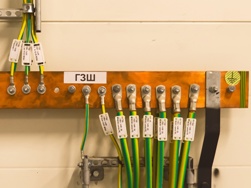 The power grid is the foundation of the modern world. Almost all modern household appliances are powered by electricity, because it is a convenient source of energy. But there is a flip side to the coin - a high risk of electric shock. Without the right approach to equipment design and network design, electricity will do more harm than good. Grounding is one way to ensure safety.
The power grid is the foundation of the modern world. Almost all modern household appliances are powered by electricity, because it is a convenient source of energy. But there is a flip side to the coin - a high risk of electric shock. Without the right approach to equipment design and network design, electricity will do more harm than good. Grounding is one way to ensure safety.
Grounding is a complex of solutions and devices for protection against electric shock and ensuring the operation of protective equipment. Domestic power networks have a grounded neutral. What does it mean? If we consider this issue in a simplified manner, then three-phase generators are installed at power plants. Their windings are connected according to the star scheme. The connection point of the windings is neutral.If you ground the junction point of the starthen we get a power line with a grounded neutral ...
 In the framework of this article, we consider the features of series and parallel connection of batteries. There are different situations where it may be necessary to increase the total capacity or increase the voltage by resorting to parallel or serial connection of several batteries to the battery, and you always need to remember the nuances.
In the framework of this article, we consider the features of series and parallel connection of batteries. There are different situations where it may be necessary to increase the total capacity or increase the voltage by resorting to parallel or serial connection of several batteries to the battery, and you always need to remember the nuances.
A parallel connection involves combining the positive terminals of the batteries with a common plus point of the circuit, and all negative terminals with a common minus. When connected in series, the batteries are connected by opposite terminals into a serial circuit, and the free positive terminal of the extreme battery is connected to the plus point of the circuit, and the free negative terminal of the other extreme battery is connected to the minus of the circuit. Parallel connection of batteries gives a combination of capacities ...
Internet of things - what is it?
 Concept and background for the birth of the "Internet of things." Due to the widespread use of smartphones and tablets, by 2010 the number of devices connected to the Internet increased to 12.5 billion, and this with a world population of 6.8 billion, that is, almost 2 connected people per inhabitant of the earth already in 2010 to the device’s global network.
Concept and background for the birth of the "Internet of things." Due to the widespread use of smartphones and tablets, by 2010 the number of devices connected to the Internet increased to 12.5 billion, and this with a world population of 6.8 billion, that is, almost 2 connected people per inhabitant of the earth already in 2010 to the device’s global network.
These devices are capable of connecting to the network and interacting with each other via Bluetooth, Zigbee, WiFi networks, via cellular networks, via satellite network, etc. Analysts do not exclude that by 2020 the number of such devices around the world will reach 50 billion. In connection with this state of affairs, it is not at all surprising that such a phenomenon as the Internet of Things or the Internet of the Things, abbreviated IoT. The concept of the Internet of things is the emergence of a computer network of things, a network of physical objects with integrated technologies of interaction as between them ...
Examples of the use of ceramic materials in electrical engineering and electric power industry
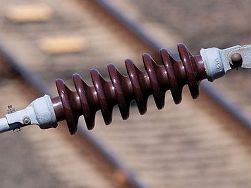 Ceramics - mixed and specially treated finely ground inorganic substances - is widely used in modern electrical engineering. The very first ceramic materials were obtained precisely by sintering powders, due to which a strong, heat-resistant, inert to most media, having low dielectric losses, resistant to radiation, capable of long-term work under conditions of variable humidity, temperature and pressure of the ceramic. And this is only part of the remarkable properties of ceramics.
Ceramics - mixed and specially treated finely ground inorganic substances - is widely used in modern electrical engineering. The very first ceramic materials were obtained precisely by sintering powders, due to which a strong, heat-resistant, inert to most media, having low dielectric losses, resistant to radiation, capable of long-term work under conditions of variable humidity, temperature and pressure of the ceramic. And this is only part of the remarkable properties of ceramics.
In the 50s, the use of ferrites (complex oxides based on iron oxide) began to grow actively, then they tried to use specially prepared ceramics in capacitors, resistors, high-temperature elements, for the manufacture of microcircuit substrates, and starting in the late 80s, in high-temperature superconductors . Later ceramic materials with the required properties ...
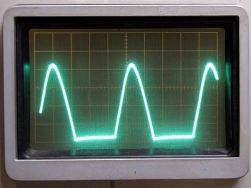 As you know, power plants produce alternating current. Alternating current is easily converted using transformers, it is transmitted through wires with minimal losses, many electric motors work on alternating current, in the end, all industrial and domestic networks today operate on alternating current.
As you know, power plants produce alternating current. Alternating current is easily converted using transformers, it is transmitted through wires with minimal losses, many electric motors work on alternating current, in the end, all industrial and domestic networks today operate on alternating current.
However, for some applications, alternating current is fundamentally unsuitable. Batteries need to be charged with direct current, electrolysis plants are powered by direct current, LEDs require direct current, and there is still much more to do without direct current, not to mention gadgets where batteries are originally used.One way or another, sometimes it is necessary to extract direct current from an alternating current by converting it, to solve this problem, they resort to rectifying the alternating current. For rectification of alternating current, diode rectifiers are used ...
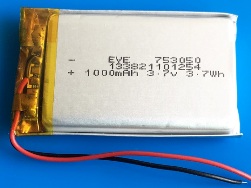 In the early 90s, when the industrial use of lithium-ion batteries was already gaining momentum, the first lithium batteries in the form of packages were developed - lithium-polymer batteries (designation “Li-Pol” or “Li-Po”). Thus, lithium polymer batteries have become a later type of lithium-ion battery. But if a liquid electrolyte is used in lithium-ion batteries, then in lithium-polymer counterparts this is already a polymer composition, in consistency it is a gel.
In the early 90s, when the industrial use of lithium-ion batteries was already gaining momentum, the first lithium batteries in the form of packages were developed - lithium-polymer batteries (designation “Li-Pol” or “Li-Po”). Thus, lithium polymer batteries have become a later type of lithium-ion battery. But if a liquid electrolyte is used in lithium-ion batteries, then in lithium-polymer counterparts this is already a polymer composition, in consistency it is a gel.
Due to the polymer base, batteries of this type have a higher specific energy intensity than others. It is for this reason that today lithium-polymer batteries are especially widely implemented in many mobile devices, where low weight is extremely important (gadgets, radio-controlled toys, etc.).A typical lithium polymer battery containsfour main parts in its design: anode, cathode, separator and electrolyte ...
Causes of malfunctions of induction motors and methods for their elimination
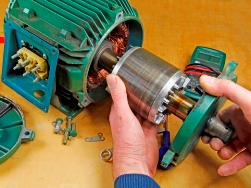 Asynchronous electric motors are more common than others in production and are often found in everyday life. With their help, various machines are driven: turning, milling, grinding, hoisting mechanisms, such as an elevator or crane, as well as various kinds of fans and hoods. This popularity is due to the low cost, simplicity and reliability of this type of drive. But it happens that a simple technique breaks down. In this article, we look at typical malfunctions of squirrel-cage induction motors.
Asynchronous electric motors are more common than others in production and are often found in everyday life. With their help, various machines are driven: turning, milling, grinding, hoisting mechanisms, such as an elevator or crane, as well as various kinds of fans and hoods. This popularity is due to the low cost, simplicity and reliability of this type of drive. But it happens that a simple technique breaks down. In this article, we look at typical malfunctions of squirrel-cage induction motors.
Faults can be divided into three groups: the engine heats up, the shaft does not rotate or does not rotate normally, it makes noise, vibrates. In this case, the engine housing can be completely heated or some separate place on it.And the motor shaft may not budge at all, not develop normal speed, its bearing may overheatand, make abnormal sounds for his work, vibrate ...
How to find out how much power a cable or wire can withstand
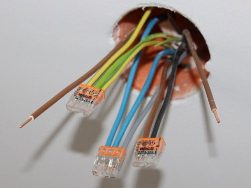 When connecting electrical appliances to the supply network, one of the main conditions is the selection of a cable or wire of suitable section. But sometimes it happens that you already have some kind of conductor, and you are not sure whether it is suitable for a specific task.
When connecting electrical appliances to the supply network, one of the main conditions is the selection of a cable or wire of suitable section. But sometimes it happens that you already have some kind of conductor, and you are not sure whether it is suitable for a specific task.
If you connect too much load on the cable, then it will warm up, and maybe even overheat. Because of this, the insulation will melt, which is dangerous with a short circuit, electric shock and fire. This begs the question: "how do you know how much power a cable or wire can withstand?". Let's figure it out! It is immediately worth noting that the cross-section and power of the cable are, in principle, not interconnected. For the conductor, the permissible continuous current plays a decisive role. These values are described in the PUE section 1, chapter 1.3. The fact is that if it can withstand a current of 16A, then in a 220V network it is 3.5 kW, for 380V it is 10 kW, and in a 12V network it is only 192W. Therefore, it is reasonable to talk about the permissible power for the cable ...
Methods and circuits for controlling a thyristor or triac
 Thyristors are widely used in semiconductor devices and converters. Various power sources, frequency converters, regulators, excitation devices for synchronous motors and many other devices were built on thyristors, and recently they are replaced by transistor converters. The main task for the thyristor is to turn on the load at the time the control signal is applied. In this article we will look at how to control thyristors and triacs.
Thyristors are widely used in semiconductor devices and converters. Various power sources, frequency converters, regulators, excitation devices for synchronous motors and many other devices were built on thyristors, and recently they are replaced by transistor converters. The main task for the thyristor is to turn on the load at the time the control signal is applied. In this article we will look at how to control thyristors and triacs.
Thyristor (trinistor) is a semiconductor semi-controlled key. Semi-controlled - it means that you can only turn on the thyristor, it turns off only when the current in the circuit is interrupted or if a reverse voltage is applied to it. He, like a diode, conducts current in only one direction. That is, for inclusion in the AC circuit to control two half-waves, two thyristors are needed, each one, although not always. The thyristor consists of 4 areas of the semiconductor (p-n-p-n) ...
